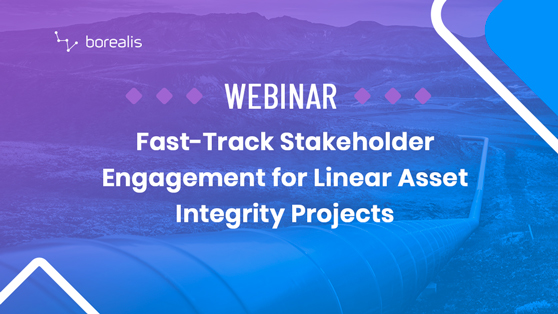Stakeholders are crucial for success in the oil and gas industry. They influence public perception, regulatory approval, and financial support.
Extractive companies cannot simply know who their key oil and gas stakeholders are. They also need to know their concerns and interests, as well as their level of influence over operations, strategic planning, and profitability.
This knowledge is obtained by conducting a stakeholder analysis. This article explains the process and benefits of conducting an oil and gas industry stakeholder analysis.
Jump to section:
- Introduction to stakeholders in the oil and gas industry
- What is a stakeholder?
- Global significance of the oil and gas industry for stakeholders
- Who are the stakeholders in the oil and gas industry?
- General categories of stakeholders in the oil and gas industry
- Key Stakeholders in the oil and gas industry
- Detailed analysis of key stakeholders in the oil and gas industry
- How key stakeholders influence operations and strategies of oil and gas companies
- Oil and gas stakeholder analysis
- Importance of stakeholder analysis in the oil and gas industry
- Overview of the process of conducting an oil and gas industry stakeholder analysis.
- Benefits of stakeholder analysis for oil and gas companies
- Case Study: Stakeholder analysis in the oil and gas industry
- Real-world example of stakeholder analysis in the oil and gas industry.
- Outcome and lessons learned from the Dakota Access Pipeline case study
- Key takeaways on managing stakeholders in the oil & gas industry
Introduction to stakeholders in the oil and gas industry
The oil and gas industry’s approach to stakeholder management has evolved significantly. Not long ago, the focus was solely on profit and production. Increased awareness of environmental issues, public scrutiny, and stricter regulations have changed this. There is now a shift towards more sustainable practices.
The industry is investing in cleaner technologies, community development, and increased transparency. Companies now prioritize proactive stakeholder engagement, focusing on building trust and addressing environmental, social, and governance (ESG) concerns.
These efforts are fostering more positive relationships and smoothing the route to long-term viability amid changing stakeholder expectations.
What is a stakeholder?
A stakeholder is any individual, group, or organization that has an interest in, is affected by, or can influence a company or industry’s activities and decisions. Stakeholders can be internal, like employees and shareholders, or external, such as local communities, regulators, and environmental groups. Their concerns and interests can range from financial returns, environmental protection, and employment opportunities to regulatory compliance and community development. Businesses and industries must address the needs of stakeholders and engage with them to operate effectively and maintain their social license to operate.
Global significance of the oil and gas industry for stakeholders
The oil and gas industry has been a cornerstone of the global economy for over a century. The energy sources it produces drive industrial processes, power vehicles, and heat homes. Its by-products are used in countless products, from plastics to pharmaceuticals. As a result, the industry influences geopolitics, trade dynamics, and the economic stability of nations. Public affairs and government relations are vital for the industry.
While pivotal for modern life, the oil and gas industry is also under scrutiny for its environmental impacts. This has prompted a push for sustainable practices and alternative energy sources. At the same time, stakeholders continue to look to the industry to fuel economic progress and energy security.
Who are the stakeholders in the oil and gas industry?

The oil and gas industry must manage a broad array of stakeholders, each with unique interests, concerns, and influences, which sometimes come into direct conflict.
See related: OECD’s Due Diligence Guidance for Meaningful Stakeholder Engagement in the Extractive Sector
General categories of stakeholders in the oil and gas industry
There are several main categories of oil and gas stakeholders. Recognizing and actively managing relationships with these stakeholders is crucial for the industry’s sustainability and reputation.
- Employees and workers: Those directly employed by the companies, including field workers, engineers, administrative staff, and executives.
- Investors and shareholders: Individuals or entities that invest in oil and gas companies expecting a return on investment.
- Government and regulators: Entities that oversee operations, provide licenses, levy taxes, and enact regulations to ensure environmental and safety compliance.
- Local communities: People living near extraction or processing sites who are directly affected by operations.
- Suppliers and contractors: Businesses that provide equipment, services, or consultancy to oil and gas companies.
- Environmental and social NGOs: Organizations advocating for environmental protection, human rights, and sustainable practices.
- Customers: Ranging from individual consumers to large industrial entities that rely on oil and gas products for energy and manufacturing.
- Competitors: Other oil and gas firms and, increasingly, renewable energy companies.
- Media: They play a role in shaping public perception and can highlight industry practices, both positive and negative.
- Indigenous Peoples: Native communities that might be impacted by exploration and extraction activities on or near their traditional lands.
- Trade unions: Representing the rights and interests of the workforce.
- Academia and researchers: They study the industry, offer insights, and sometimes develop new technologies or methodologies.
- General public: Their perceptions influence policy decisions, brand reputation, and consumer choices.
Key Stakeholders in the oil and gas industry
While all oil and gas stakeholders play a role, some hold particularly significant influence over the operations, decisions, and long-term viability of companies.
Companies must engage effectively with key stakeholders to navigate challenges and optimize opportunities.
How to fast-track stakeholder engagement for linear asset integrity projects
Detailed analysis of key stakeholders in the oil and gas industry
The following groups are considered key stakeholders due to their direct impact on and high stakes in the industry. By understanding their roles and interests, oil and gas companies can tailor their engagement strategies, address concerns, and build collaborative relationships.
- Employees and workers:
- Importance: The success and safety of operations largely depend on them.
- Role: They directly manage, operate, and oversee various functions from exploration to distribution.
- Interests: Safe working conditions, fair compensation, job security, and opportunities for professional growth.
- Investors and shareholders:
- Importance: Their financial backing and demand for returns directly shape the industry’s strategies and priorities.
- Role: They provide the capital necessary for exploration, production, and expansion projects.
- Interests: A return on investment, financial stability of the company, and long-term growth prospects.
- Government and regulators:
- Importance: Their policies, regulations, and licensing terms can significantly impact industry operations and profitability.
- Role: They set regulations, policies, and standards that companies must adhere to; they also provide licenses and permits for operations.
- Interests: Ensuring responsible extraction and use of national resources, generating revenue through taxes and royalties, and safeguarding the environment and public interests.
- Local communities:
- Importance: Their support or opposition can affect the feasibility of projects, especially given their proximity to exploration or processing sites.
- Role: They are often the immediate neighbors of exploration, drilling, or processing sites.
- Interests: Protecting their environment, ensuring safety standards to prevent incidents like spills or explosions, and benefiting from the industry through job opportunities or community development projects.
- Suppliers and contractors:
- Importance: Dependable and high-quality service from them ensures seamless operations.
- Role: They provide the necessary equipment, technology, services, and expertise required for operations.
- Interests: Stable business relationships, timely payments, and long-term contracts.
- Environmental and social NGOs:
- Importance: Their campaigns can influence public perception and lead to stricter regulations, making their concerns important to address.
- Role: They advocate for environmental protection, human rights, and sustainable operational practices.
- Interests: Minimizing environmental degradation, ensuring companies uphold social responsibilities, and transitioning to cleaner energy sources.
- Trade unions:
- Importance: They can influence operational practices, especially regarding safety and labor rights.
- Role: They represent the collective interests of workers, ensuring their rights are respected and their conditions of work are safe and fair.
- Interests: Worker safety, fair compensation, benefits, and a voice in discussions affecting labor practices.
How key stakeholders influence operations and strategies of oil and gas companies
Key stakeholder groups collectively shape the operational environment, risk landscape, and strategic opportunities for oil and gas companies. Hence the necessity of proactive and constructive engagement with each.
- Employees and workers:
- Their skills, morale, and productivity directly affect daily operations.
- Their feedback and expertise often shape operational improvements and innovations.
- Investors and shareholders:
- They dictate financial priorities through their expectations for returns.
- Their confidence or lack thereof can impact a company’s stock price, investment inflows, and long-term planning.
- Government and regulators:
- They set the legal and regulatory framework within which companies operate.
- Their policies can incentivize or penalize certain operational approaches, shaping corporate strategies on issues like environmental compliance or community engagement.
- Local communities:
- Their acceptance or resistance can accelerate or hinder project approvals and operations.
- Community concerns can lead to operational adjustments or the initiation of community-focused projects.
- Suppliers and contractors:
- Their reliability, innovations, and pricing can impact operational efficiency and cost structures.
- Collaborations with them can lead to improved technologies or methodologies in exploration and extraction.
- Environmental and social NGOs:
- Their campaigns and advocacies can sway public opinion, leading to tighter regulations or shifts in consumer behavior.
- They can also act as watchdogs, spotlighting irresponsible practices and pushing for sustainable operations.
- Trade unions:
- They play a role in setting employment terms, wages, and working conditions.
- Their actions, from negotiations to strikes, can significantly impact operational continuity and labor-related costs.
Oil and gas stakeholder analysis
Stakeholder analysis offers a roadmap for the oil and gas industry to navigate its complex socio-economic and environmental landscape, ensuring more informed, resilient, and sustainable operations.
This systematic process allows companies to identify, understand, and prioritize stakeholders relative to a project or decision.
Importance of stakeholder analysis in the oil and gas industry
Stakeholder analysis in the oil and gas industry is pivotal for several reasons:
- Risk management: It helps identify potential risks, from community resistance to regulatory challenges, enabling companies to preemptively address issues before they escalate.
- Strategic decision-making: By understanding stakeholder interests, companies can align their strategies to meet both business objectives and stakeholder expectations, fostering a harmonious operating environment.
- Resource allocation: Companies can prioritize resources for engagement activities, community development, or environmental initiatives based on the significance and influence of various stakeholders.
- Building trust: Proactively addressing stakeholder concerns establishes trust, which is essential for gaining a social license to operate, especially in sensitive regions or new projects.
- Protecting reputation: Effective stakeholder management, following stakeholder engagement best practices and informed by thorough analysis, boosts a company’s reputation, making it more attractive to investors, partners, and the broader public.
Looking for best practices on how to better involve and engage stakeholders to address issues and avoid conflict during the development and production stages?
Overview of the process of conducting an oil and gas industry stakeholder analysis.
By following the stakeholder analysis process outlined below, oil and gas companies can ensure that they proactively and effectively engage with all relevant parties, leading to smoother project implementation, reduced risks, and more sustainable operations.
- Identification of stakeholders: List all potential groups, organizations, or individuals who can affect or are affected by the industry’s activities. This could range from local communities and employees to regulators and NGOs.
- Categorization of stakeholders: Classify and map stakeholders based on their characteristics, such as internal vs. external, or primary vs. secondary. Companies can use a power-interest grid to categorize stakeholders based on their influence over the project and their interest in it.
- Assessment of stakeholder interests: Determine the concerns, expectations, and potential demands of each stakeholder. Understand their viewpoints, potential objections, and what they value most.
- Assessment of stakeholder influence and power: Evaluate the ability of each stakeholder to influence the project’s outcome. Consider their resources, connections, legal standing, and public influence. Companies can use a stakeholder matrix to better understand complex and intertwining relationships.
- Evaluation of potential impact: Analyze the potential impact on the project if stakeholders’ needs and concerns aren’t addressed. This will help in prioritizing stakeholder engagement efforts.
- Development of the engagement strategy: Based on the above assessments, develop tailored engagement strategies for each stakeholder or group of stakeholders. This might include public consultations, focused group discussions, or partnership initiatives.
- Implementation of the engagement strategy: Carry out the engagement strategies, ensuring open communication, transparency, and stakeholder feedback mechanisms. The aim is to build trust, address concerns, and foster collaboration.
- Periodic revision of the stakeholder analysis: Regularly review the stakeholder analysis, especially if there are changes in the project scope, environment, or stakeholder dynamics. Adjust engagement strategies accordingly.
- Documentation of stakeholder data: Maintain a comprehensive record of all stakeholder interactions, feedback, and commitments. Creating a corporate memory of all stakeholder data will be crucial for accountability, future reference, and continuous improvement.
Benefits of stakeholder analysis for oil and gas companies
Stakeholder analysis is a key step in developing a solid stakeholder engagement plan. It empowers oil and gas companies to operate more effectively, responsibly, and sustainably, fostering long-term success in an industry characterized by complex socio-political dynamics.
Download your free stakeholder engagement plan template
The following are the main benefits of conducting oil and gas stakeholder analysis.
- Informed decision-making: By understanding the interests, concerns, and influence of stakeholders, companies can make decisions that are more aligned with both business objectives and stakeholder expectations.
- Risk mitigation: Stakeholder analysis helps in identifying potential socio-political, environmental, or economic risks, enabling companies to proactively address these challenges and reduce unforeseen disruptions.
- Easier compliance: By identifying and understanding all applicable social and environmental requirements, regulations and standards, companies can more easily manage the regulatory compliance process.
- Enhanced reputation: By actively addressing stakeholder concerns, companies can improve their public image, foster trust, and bolster their social license to operate.
- Optimal resource allocation: Companies can prioritize resources and investments based on the significance and influence of various stakeholders, ensuring optimal outcomes from engagement efforts.
- Stronger relationships: Proactively engaging with stakeholders based on a thorough analysis strengthens relationships, facilitating collaboration, partnerships, and mutual understanding.
- Improved operational efficiency: By addressing stakeholder concerns early on, companies can avoid project delays, strikes, or protests that may arise from unresolved issues.
- Better strategic alignment: Stakeholder analysis can inform a company’s broader strategy, ensuring alignment with environmental, social, and governance (ESG) goals, which are increasingly significant for investors.
- Increased financial stability: Positive stakeholder relations can lead to better financial performance, as companies with strong community and environmental relations often face fewer fines, lawsuits, and disruptions.
See related: APAC Oil and Gas Firms to Face Tougher Fundraising for New Projects: IEEFA
- Future preparedness: Regular stakeholder analysis prepares companies for future challenges, allowing them to anticipate changing societal expectations, regulatory shifts, or emerging concerns.
- Enhanced communication: Understanding stakeholder perspectives enables companies to communicate more effectively, addressing concerns transparently and highlighting collaborative efforts.
Case Study: Stakeholder analysis in the oil and gas industry
There are several case studies centered on stakeholder analysis in the oil and gas industry, including BP’s Deepwater Horizon oil spill to Shell’s operations in the Niger Delta.
Such cases offer insights into the complexities of operating in a region with socio-political challenges, the importance of community relations, and the potential consequences of not adequately addressing stakeholder concerns.
Real-world example of stakeholder analysis in the oil and gas industry.
One of the most widely discussed real-world examples involving stakeholder analysis in the oil and gas industry is the case of the Dakota Access Pipeline (DAPL) in the United States.
The DAPL is a crude oil pipeline running from North Dakota to Illinois. Its construction was controversial due to environmental concerns and the pipeline’s route near the Standing Rock Sioux Tribe’s reservation. This tribe, along with environmental activists and other indigenous groups, raised serious concerns about the potential contamination of their water source and infringement on sacred lands.
STAKEHOLDER ANALYSIS
- Identification of stakeholders: Primary stakeholders included the pipeline company (Energy Transfer Partners), indigenous communities (notably the Standing Rock Sioux Tribe), local landowners, environmental NGOs, and government regulatory bodies.
- Categorization of stakeholders: The Standing Rock Sioux Tribe and local landowners were directly impacted. Environmental NGOs, though external, held significant interest due to potential environmental impacts.
- Assessment of stakeholder interests: The tribe was concerned about potential water contamination and cultural heritage infringement. Environmentalists were worried about potential oil spills and broader environmental degradation.
- Determination of stakeholder influence and power: The Standing Rock Sioux Tribe’s concerns garnered widespread media attention and public sympathy, amplifying their influence. Environmental NGOs mobilized large-scale protests and legal challenges.
- Evaluation of potential impact: Protests, legal battles, and media attention delayed the project, increased costs, and impacted the company’s reputation.
Outcome and lessons learned from the Dakota Access Pipeline case study
Despite the completion and operation of the pipeline, the controversy highlighted the importance of comprehensive stakeholder analysis. The company faced significant opposition, which might have been mitigated or addressed earlier with a more proactive engagement plan.
Key takeaways on managing stakeholders in the oil & gas industry
Thorough stakeholder analysis and engagement are critical, especially in projects with potential environmental and cultural impacts. The DAPL case underscores the importance of early and continuous dialogue with all stakeholders, understanding their concerns, and integrating their feedback into project planning and execution.
Stakeholder engagement teams in the oil and gas industry use Borealis software’s proven methodology to engage stakeholders more effectively and demonstrate compliance.








